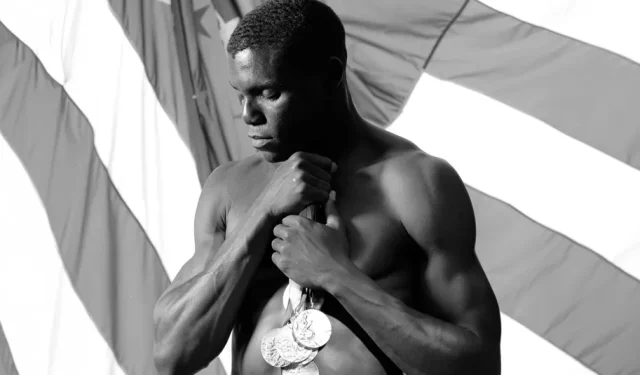Exploring the Legacy of Carl Lewis in the Documentary “I’m Carl Lewis!”
In 2012, the critically acclaimed film 9.79* debuted as part of ESPN’s 30 for 30 series, directed by Daniel Gordon. The documentary captured the gripping 100-meter final at the Seoul Olympics— a race marked by Ben Johnson’s explosive performance, followed by his disqualification due to a positive steroid test. This left Carl Lewis with a bittersweet victory, casting a long shadow over his accomplishments.
Despite being one of the most celebrated figures in track and field history, Lewis has often been perceived as enigmatic and, at times, unlikable. Even after he secured a victorious long jump at the Atlanta Olympics, which could have solidified his public image, he remained somewhat elusive.
New Perspectives from “I’m Carl Lewis!”
This complexity is addressed in the new documentary, I’m Carl Lewis!, directed by Julie Anderson and Chris Hay. Premiering at SXSW, the film not only celebrates Lewis’s remarkable athleticism but also presents a nuanced view of his role as a trailblazer against the outdated norms of Olympic amateurism. It highlights how he was often labeled as arrogant just a few years before similar traits were redefined as confidence, showcasing his willingness to challenge gender norms and the subsequent fallout from these bold stands.
Throughout the documentary, Lewis’s personality emerges as selective; he reveals only what he chooses. Anderson and Hay navigate the challenge of capturing the essence of Lewis while also illustrating the explicit double standards—many of which are racially charged—that negatively affected his public image.
A Chronological Look at Athletic Excellence
Structured chronologically, the film chronicles Lewis’s extraordinary career across four Olympic Games, beginning with the 1984 Los Angeles Olympics, where he matched Jesse Owens by securing four gold medals. The narrative spans two decades, marked by notable events such as the infamous 1988 race against Johnson—who is notably absent from this documentary—and the thrilling long jump competition against Mike Powell in 1991, where both athletes approached Bob Beamon’s longstanding record.
Viewers are treated to a wealth of footage showcasing Lewis’s athletic prowess, illuminating his grace on the track. Additionally, interviews with journalists capture the often-contentious dynamics that restricted his public engagement, revealing a combative atmosphere that sometimes portrayed him unfavorably.
Debates on Social Impact and Perception
With the benefit of hindsight and Lewis’s candid reflections, the film reassesses accusations of his confrontational demeanor in the 1980s. Was his quest for compensation a sign of greed, or a pivotal push against a system that disproportionately benefited sponsors and organizers? Archival footage of dismissive advertising executives juxtaposed with testimonials from Lewis’s peers illustrates the threat he posed to conventional norms and his role in paving the way for future athletes.
Furthermore, the documentary does not shy away from addressing Lewis’s vocal opposition to drug use in sports. He was an early accuser of Johnson’s doping practices and candidly discusses his own past controversies regarding a positive drug test prior to the 1988 Olympics, an issue that had already been in the public domain for over three decades.
Handling Complexities of Identity
One of the more delicate themes explored in the film is Lewis’s sexuality, which was a hot topic of speculation during his athletic prime. As commentator Keith Boykin notes, Lewis’s departure from traditional notions of masculinity made him both an empowering figure and a target for criticism. However, the documentary struggles to fully convey how Lewis empowered the LGBTQ+ community, especially given his past reluctance to address his sexuality openly.
Although Lewis has adopted a more playful and evasive tone in recent interviews, delighting in past projects like his iconic Pirelli ad, there remain unresolved questions about his earlier denials and how they might have impacted his legacy. The film ultimately focuses on what society owes Lewis, rather than delving deeply into what he could have shared with society.
Conclusion: A Lasting Impression
In its essence, I’m Carl Lewis! draws parallels to Alex Stapleton’s documentary on Reggie Jackson, which forced viewers to rethink preconceptions based on historical narratives. While it may not completely redefine Lewis’s legacy, it effectively underscores his extraordinary achievements on the track and the complexities surrounding his public persona.


